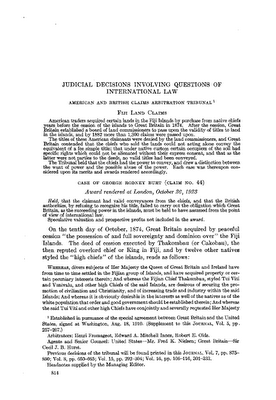
Fiji's land tribunal has attracted much attention. Citizens Constitutional Forum head shed, Rev Akula Yabaki has contributed an interesting
opinion article on the Lands Claim Tribunal
legislation in Fiji, which appeared in the Fiji Times (Tues. Oct 10th 2006 issue).
It is prudent for the public to study other similar models that incorporated mechanisms, like the return of tribal land to the native owners. S.i.F.M echoes Yabaki's sentiments on the need for further and in depth consultations on the matter.
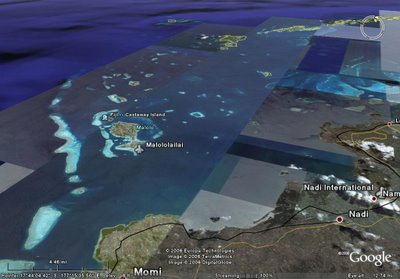 Above: Mamanuca group.
Above: Mamanuca group.One such model from New Zealand's
Crown Forestry Rental Trust organization that is similar to Fiji Hardwood Corporation (managing the proceeds from the native forest plantations), however there is one major difference. The Rental Trust was created to assist the landowning units of New Zealand during and after the Waitangi Land s Tribunal claims.
This is an excerpt of the Rental Trust website describing themselves.
The Crown Forestry Rental Trust was set up under the Crown Forest Assets Act 1989, after the New Zealand Māori Council and Federation of Māori Authorities took court action to protect Māori interests in the Crown’s commercial forests.
The Act allowed the Crown to sell licences for forestry, but prevented it from selling the land itself until the Waitangi Tribunal recommends who has ownership of the land - Māori or the Crown.
On 30 April 1990, Māori and Crown representatives signed a Trust Deed to establish the Crown Forestry Rental Trust.
The
Waitangi Tribunal website describes the Rental Trust as follows:
Despite its name, the Crown Forestry Rental Trust is not a Crown agency. It is an independent trust that was established in 1989, as a result of an agreement between the Crown and Māori, to receive the rental proceeds from the licensing of Crown forest land.
The Trust uses the interest earned from the rentals to assist Māori to prepare and present claims to the Waitangi Tribunal. It also provides assistance for Maori to negotiate settlements with the Office of Treaty Settlements. The Trust is the largest funder of research for Tribunal claims.
The Crown Forestry Rental Trust has
created a booklet(PDF) to assist the resource owners in the claims process.
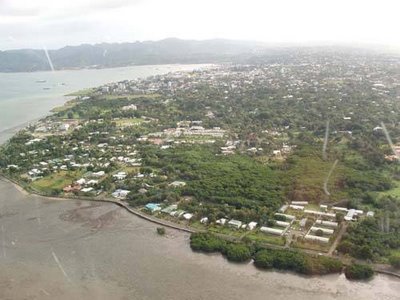 Left: Suva foreshore. The native inhabitants of Suva have expressed their desire to control the area's foreshore.
Left: Suva foreshore. The native inhabitants of Suva have expressed their desire to control the area's foreshore.Somehow the general framework of the Rental Trust operates with much similarity to Fiji's own Native Lands Trust Board. It is hoped that the same characteristics are not duplicated with Fiji's own Lands Tribunal Commission. In particular, the notion of having a Fijian dominated Government colonizing their own native inhabitants.
Having such a pseudo state-like entity in Fiji calling the shots on how the claims process should operate, is treading on the thin ice of ethical violations involving the division of powers. This contention of abuse of power by Native Lands Trust Board (N.L.T.B) resonates loudly, considering the avalanche of negative publicity involving N.L.T.B who are more inclined to listen to the concerns of their wealthy tenants, rather than the claims of abuse by poor landowners.
However one thing native resource owners in Fiji can actively gain from the New Zealand experience, is a greater understanding of the
Waitangi claims process which uses fundamentals of English common law; also in force in Fiji jurisprudence.
The segment of
preparing evidence is quite helpful for resource owners who are claimants yet are ignorant of the necessary steps needed to draw up their claims.
Another factor that should be incorporated by Fiji's Land Tribunal is the transparency index.
Each report from the Waitangi Tribunal is available to the public for perusal.
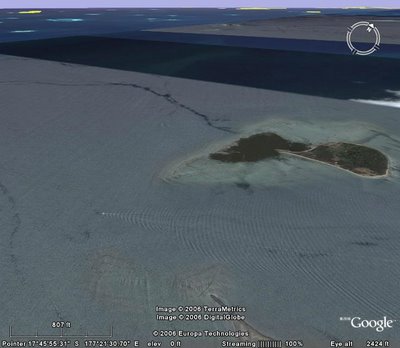 Above: Island off Nasoso, Nadi.
Above: Island off Nasoso, Nadi.Another model worth studying is the land claims for the natives of Alaska. The
website for the Alaska Land claims is quite comprehensive as well, as it provides other resources for natives.
The Alaskan website also provides links to other indigenous groups from around the globe. They are as follows:
Aborigine of Australia,
Indigenous people of Africa,
Hawaii the 50th state of U.S,
Ainu of Japan,
Native American Indian,
First Nations of Canada,
Inuit of Greenland and Canada,
Maori of New Zealand,
Indigenous People of Russia,
Saami of Scandinavia,
S.i.F.M has taken the liberty in drawing up a flow diagram template for Fiji; borrowing from the Waitangi model of claims.
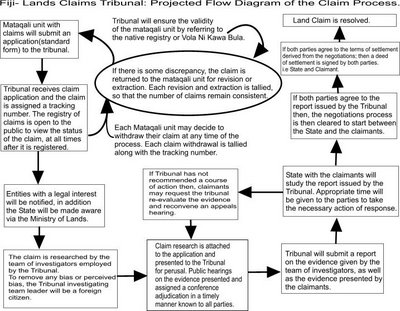 Club Em Designs
Club Em Designs






















